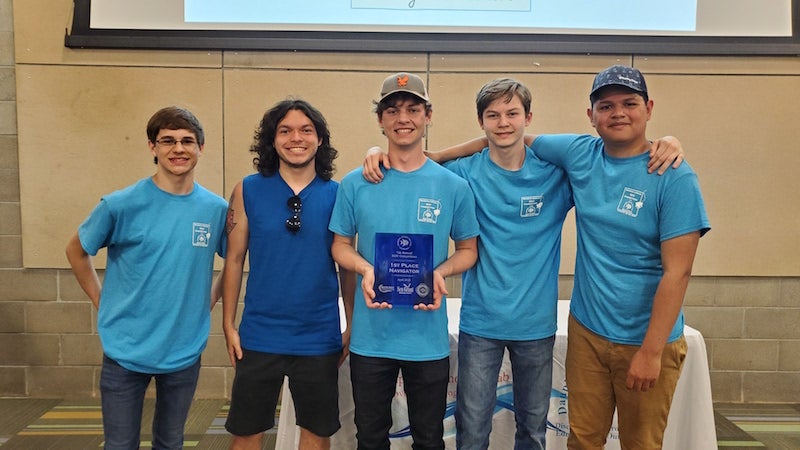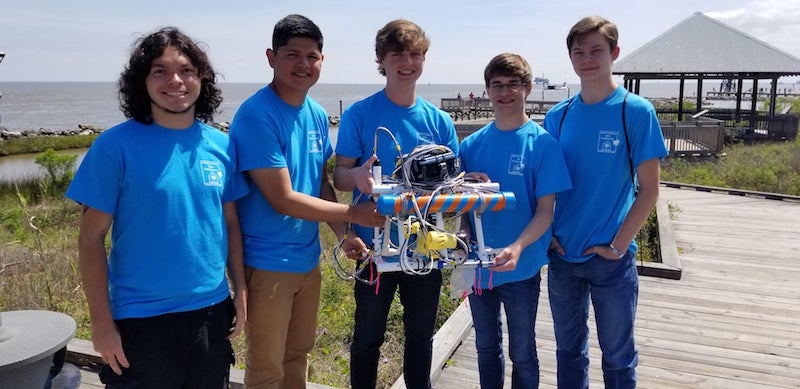STEM Academy places 1st at underwater robot competition
Published 2:00 pm Thursday, May 2, 2019
By JOYANNA LOVE/ Senior Staff Writer
The Tiger Shark Underwater Robotics team from the LeCroy Career Technical Center STEM Academy has placed first in the Navigator class at a Dauphin Island Sea Lab competition.
This was the second year for a Chilton County Schools team to compete in the Northern Gulf Coast Regional ROV (remotely-operated vehicles) competition.
“It was very exciting (to win),” team member Jon Nelson said.
The competition featured 27 teams with underwater robots from six states, including Alabama, Mississippi, Florida, Arkansas, Georgia and Louisiana.
“I’m really proud of how we presented ourselves and our school,” team leader Jordan Johnson said.
According to a press release from the Sea Lab’s Discovery Hall Programs, “The competition is a part of the Marine Advanced Technology Education (MATE) network of 37 regional competitions held worldwide.”
This year’s missions included “inspecting and repairing a dam, maintaining healthy waterways, and preserving history by locating and recovering a Civil War-era cannon. The missions’ difficulty changes with the ROV competition category: Scout, Ranger or Navigator.”
Team member Usiel Acosta said the robot had to be a certain size to score the most points.
“It was all about getting higher points than everybody else,” Acosta said.
Points were earned by remotely controlling the robot’s movements to complete tasks in a pool.
Acosta said this included picking up items, dropping items, testing the pH level of the water and transporting fish.
“During the competition, we scored 133,” Johnson said.
Team member Cage Phillips said his role was making sure the cords for the power supply and camera did not get tangled in the motor as it navigated the course.
Acosta said the team developed a way for the robot to transport multiple items at once to increase efficiency. This allowed them to score more points in the 15 minutes allotted.
LCTC teacher Jason Sosa assisted the team during the design phase.
“We built on last year’s design,” Sosa said. “What they added this year was the ability to deploy multiple items at one time. It’s what wound up being their advantage this year.”
Since the robot could hold six items at a time, the robot did not have to come to the surface as often. Sosa said the team studied the best release mechanism to use.
Johnson, the pilot for the robot, said they practiced navigation of the robot in a swimming pool to prepare for the competition.
“We built the props that would be used during the competition, and … we attempted to practice every day after school,” Johnson said.
Nelson said he worked on the materials needed for the engineering presentation.
According to the press release, “In addition to the ROV missions, the Navigator and Ranger teams presented their ROV company’s design plans and implementation procedures to a panel of engineers and their fellow competitors.”
Robots also had to pass a safety inspection.
During the competition, an acrylic piece that enabled the robot to carry two of the items broke.
Nelson said the net for transporting the fish also got tangled in one of the motors.
Nelson said he enjoyed “just being able to be around great people (and) learn as I went through it.”
Acosta agreed, saying he made friends with some of the other students at the competition that he plans to stay in touch with.
“I enjoyed being able to go down there and try a new experience,” Johnson said. “I’ve never competed in anything quite like this. I really wanted to broaden my horizons and see what I could accomplish.”
Nelson said the whole experience was “a lot of fun.”
LCTC teacher Jay LeCroy said last year was the first time the school took a team to the competition, and they would continue to grow. Sosa said there are plans to have multiple teams next year to have opportunities for a beginner and an advanced team.








